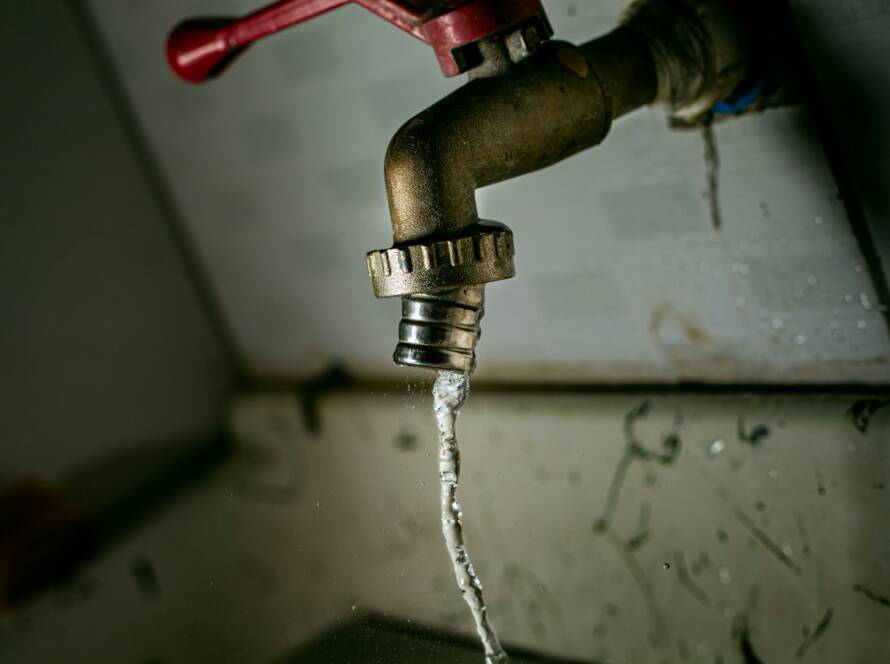You run a museum, and every day you’re responsible for protecting priceless artifacts that can never be replaced. One environmental control failure could destroy treasures that have survived centuries. Yet many museums still rely on basic humidity control that’s more guesswork than science.
Poor humidity control is one of the biggest threats to museum collections worldwide. It’s also one of the most preventable.
The Hidden Threat to Your Collection
Humidity – the amount of moisture in the air – might seem like a minor concern, but it’s actually a silent destroyer of artifacts. Too much moisture, too little moisture, or constant changes can ruin priceless pieces in days.
Here’s what you’re protecting against:
High humidity (above 60%):
- Mold grows on paintings, books, and textiles
- Metal objects rust and corrode
- Wood swells and warps
- Paper documents deteriorate rapidly
Low humidity (below 40%):
- Wood cracks and splits
- Paint flakes off canvases
- Paper becomes brittle and tears
- Textiles shrink and become fragile
Fluctuating humidity:
- Materials expand and contract, causing stress fractures
- Paint separates from canvases
- Ancient artifacts that survived thousands of years can be destroyed in hours
The safe zone for most museum artifacts is 45-55% humidity, maintained consistently.
When Humidity Control Fails: Real Disasters
Museums worldwide have learned expensive lessons about humidity control failures:
The weekend disaster: A major art museum’s air conditioning failed over a long weekend. Humidity soared to 80% in their main gallery. By Monday, several oil paintings had developed cracks, and mold was growing on a 200-year-old masterpiece. Restoration costs: over £500,000.
The brittle book crisis: A historical society’s humidification system broke during winter. Humidity dropped to 25% for two weeks. Rare books from the 1800s became so brittle that pages crumbled when touched. Some irreplaceable documents were lost forever.
The ancient artifact emergency: Wild humidity swings damaged a 3,000-year-old Egyptian sarcophagus. The wooden artifact developed cracks so severe that pieces actually fell off. The damage was permanent and the artifact’s value – both monetary and historical – was destroyed.
The textile tragedy: A costume museum didn’t monitor humidity in their storage basement. High humidity caused mold to grow throughout their collection. Hundreds of historical garments had to be destroyed because the damage was too extensive to repair.
Each disaster could have been prevented with proper humidity monitoring and control.
Why Museums Face Unique Challenges
Your museum faces humidity control challenges that other buildings don’t:
Historic buildings: Many museums occupy old buildings not designed for climate control. Thick stone walls, high ceilings, and poor insulation make steady humidity difficult to maintain.
Visitor impact: Every person brings moisture through breathing and perspiration. A busy day with thousands of visitors significantly affects humidity levels.
Mixed collections: Different materials need different conditions. Oil paintings prefer 50% humidity, ancient papyrus needs 45%, and metal armor works best at 40%. Finding the right balance for mixed displays is complex.
Large spaces: Museum galleries are often huge rooms with high ceilings. Controlling humidity in such spaces is exponentially harder than in smaller rooms.
Seasonal variations: Outside weather constantly tries to influence indoor conditions. Summer humidity seeps in while winter heating systems create extremely dry air.
The Old Way: Reactive and Risky
Traditional humidity control methods often fail when you need them most:
Basic thermostats control temperature but ignore humidity levels. A room might be the perfect temperature but have dangerously high or low humidity.
Manual monitoring relies on staff checking humidity meters a few times daily. But humidity can change rapidly – what’s perfect at 9 AM might be dangerous by noon.
Simple humidifiers and dehumidifiers run constantly, wasting energy and often overcorrecting. They create humidity swings that can be worse than steady poor conditions.
Reactive responses only discover problems after damage occurs. By the time you notice condensation on display cases or cracks in paintings, valuable artifacts may already be compromised.
Smart Monitoring: Prevention, Not Reaction
Companies like SmartSenser have revolutionized museum climate control with intelligent monitoring systems that prevent problems before they cause damage.
Continuous monitoring: Sensors measure humidity levels every few minutes throughout your museum. They’re placed strategically in galleries, storage areas, and display cases to create a complete picture of your climate conditions.
Predictive intelligence: The system doesn’t just react to problems – it predicts them. Using artificial intelligence, it identifies patterns and warns you about potential issues before they cause damage.
Automatic adjustments: When humidity starts drifting from ideal levels, the system automatically adjusts humidifiers, dehumidifiers, and ventilation to bring conditions back to perfect levels.
Zone-by-zone control: Different areas can have different humidity settings. Your Egyptian wing might maintain 45% humidity while your oil painting gallery stays at 50% – all managed automatically.
Instant alerts: If something goes wrong, the system immediately notifies key staff via text, email, or phone calls. Multiple people can be alerted to ensure quick response.
The Business Case for Smart Humidity Control
Prevent catastrophic losses: One prevented disaster can save more money than the entire monitoring system costs. A single damaged masterpiece can cost hundreds of thousands to restore – if restoration is even possible.
Reduce insurance premiums: Many insurers offer discounts for museums with professional climate monitoring because they’re much less likely to have expensive claims.
Lower energy costs: Smart systems only use energy when needed, reducing utility bills by up to 30% compared to constantly running basic equipment.
Protect your reputation: Climate-related damage to collections can damage your museum’s reputation and credibility with donors, visitors, and the broader cultural community.
Meet conservation standards: Professional monitoring helps you meet international conservation standards and best practices for artifact preservation.
Improve visitor experience: Proper humidity levels make the museum more comfortable for visitors while protecting your collection.
How SmartSenser Protects Your Museum
SmartSenser’s approach provides comprehensive protection:
Wireless sensor network: Small, unobtrusive sensors throughout your museum constantly monitor humidity, temperature, and air quality. Visitors don’t even notice them.
Cloud-based intelligence: All sensor data feeds into SmartSenser’s cloud system, which uses advanced algorithms to analyze conditions and make smart decisions about climate control.
Integration with existing systems: The technology works with your current heating and cooling systems, making installation straightforward and cost-effective.
Historical data analysis: The system tracks patterns over time, helping you understand how your building responds to weather changes, visitor loads, and seasonal variations.
Mobile access: You can monitor conditions from anywhere using your smartphone or computer. Check on your collection from home, while traveling, or during off-hours.
Beyond Humidity: Complete Environmental Protection
SmartSenser’s systems monitor more than just humidity:
- Temperature control for optimal artifact preservation
- Air quality monitoring to detect harmful pollutants
- Light level management to protect light-sensitive pieces
- Water leak detection to prevent flooding disasters
- Security integration for climate-controlled storage areas
Implementation: Simpler Than You Think
Assessment: SmartSenser evaluates your current systems and collection needs to design a custom solution.
Installation: Wireless sensors install quickly without disrupting operations or damaging historic building features.
Integration: The system connects with your existing HVAC equipment – no need for expensive replacements.
Training: Staff learn to use the monitoring system and respond to alerts effectively.
Ongoing support: SmartSenser provides continuous monitoring and technical support to ensure optimal performance.
Real Results from Real Museums
Cost savings: A regional history museum prevented two potential humidity disasters in their first year with SmartSenser, saving an estimated £75,000 in restoration costs.
Energy efficiency: A contemporary art museum reduced their HVAC energy consumption by 25% while improving climate control throughout the building.
Peace of mind: A museum director reported: “I used to worry every weekend about our climate control. Now I can check everything from my phone. Last month, the system caught a humidifier failure at 3 AM and automatically compensated until we could repair it the next morning.”
Collection protection: A natural history museum credits smart monitoring with preventing mold damage to their textile collection during an unusually humid summer.
Your Next Steps
Every day without proper humidity monitoring puts your collection at risk. The technology exists today to prevent almost every humidity-related disaster.
Evaluate your current protection:
- How often do you check humidity levels?
- What backup systems do you have if equipment fails?
- Can you monitor conditions remotely?
Calculate your risk:
- What would it cost to restore one damaged piece?
- How much insurance coverage do you carry for environmental damage?
- What’s your most valuable or irreplaceable artifact?
Consider smart monitoring:
- Professional systems cost less than most single restoration projects
- Installation is straightforward and non-disruptive
- The technology pays for itself through prevented damage
Contact SmartSenser:
- Get a custom assessment of your needs
- Learn about installation options and costs
- Discuss how the system integrates with your current setup
Protecting Cultural Heritage
Museums are guardians of human history and culture. The artifacts you protect tell our collective story and inspire future generations. When humidity damages these irreplaceable treasures, we all lose part of our shared heritage.
Smart humidity control isn’t just about protecting objects – it’s about preserving knowledge, culture, and history for generations to come.
The investment in professional monitoring is minimal compared to the value of what you’re protecting. For less than the cost of restoring one damaged painting, you can install comprehensive protection for your entire collection.
Don’t wait for a disaster to teach you an expensive lesson. The technology exists today to keep your collection safe automatically, continuously, and reliably.
Your artifacts have survived centuries to reach your care. With smart humidity control, they’ll survive centuries more to inspire and educate future generations.
That’s not just smart technology – that’s protecting the irreplaceable legacy of human civilization.


